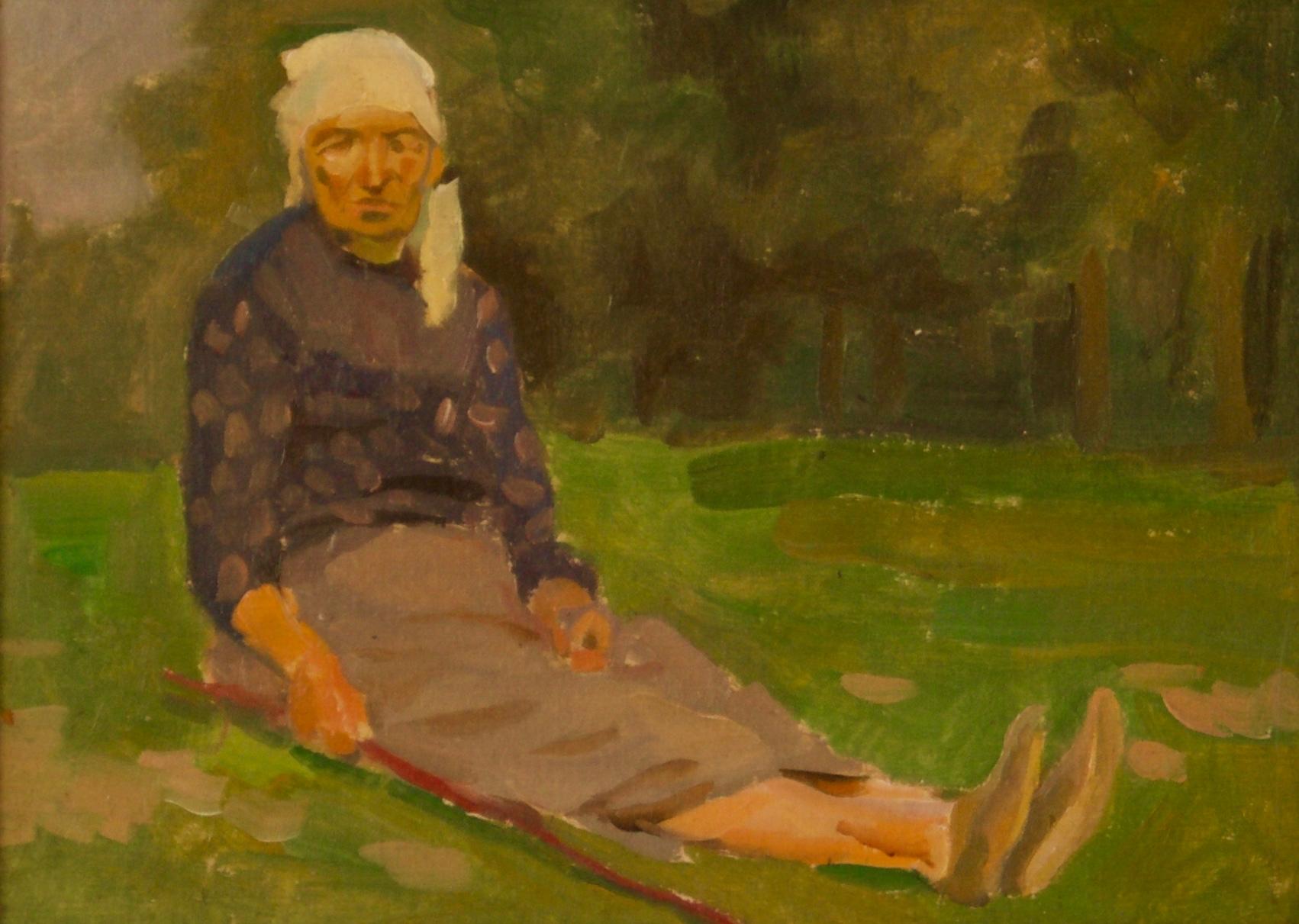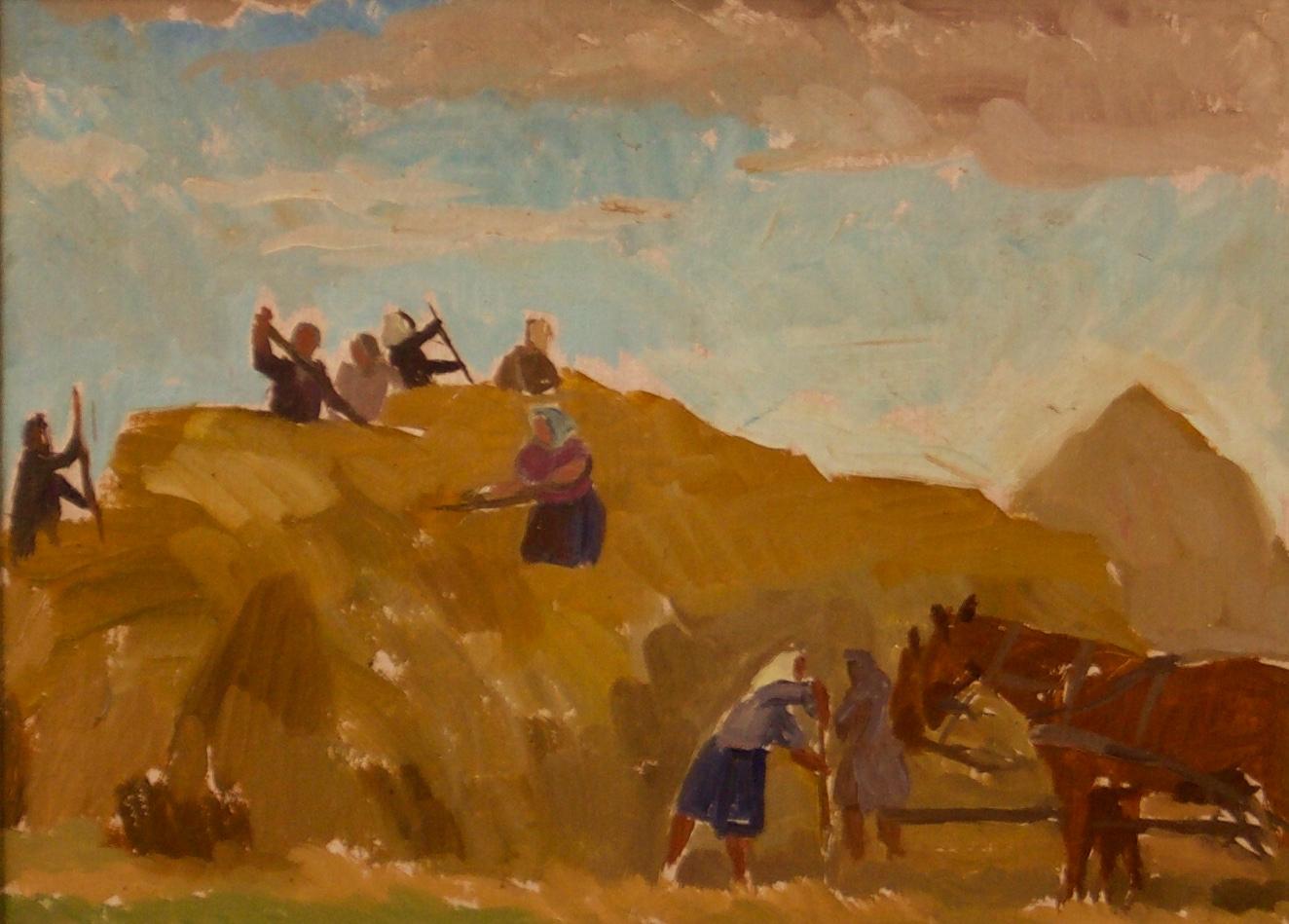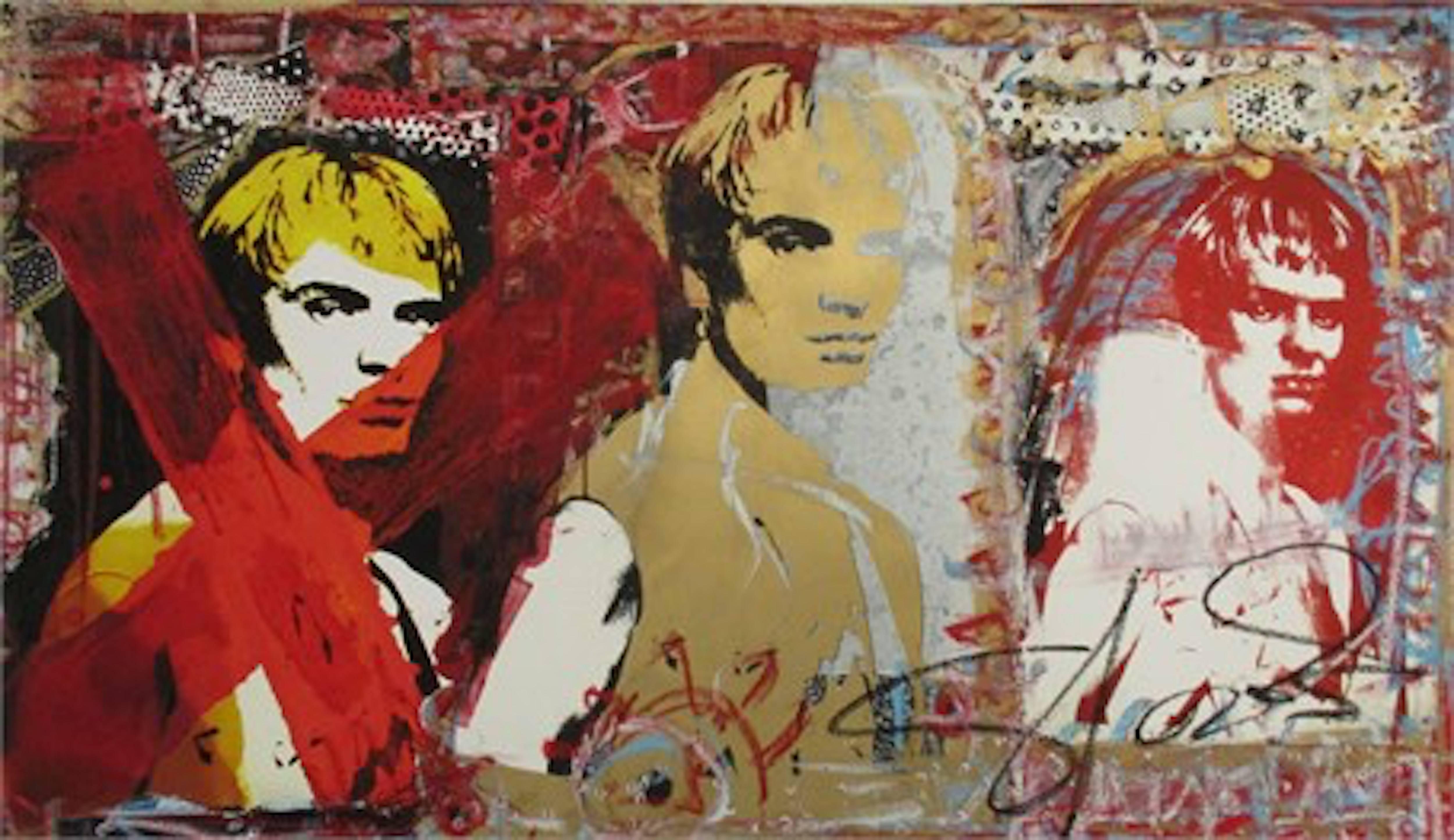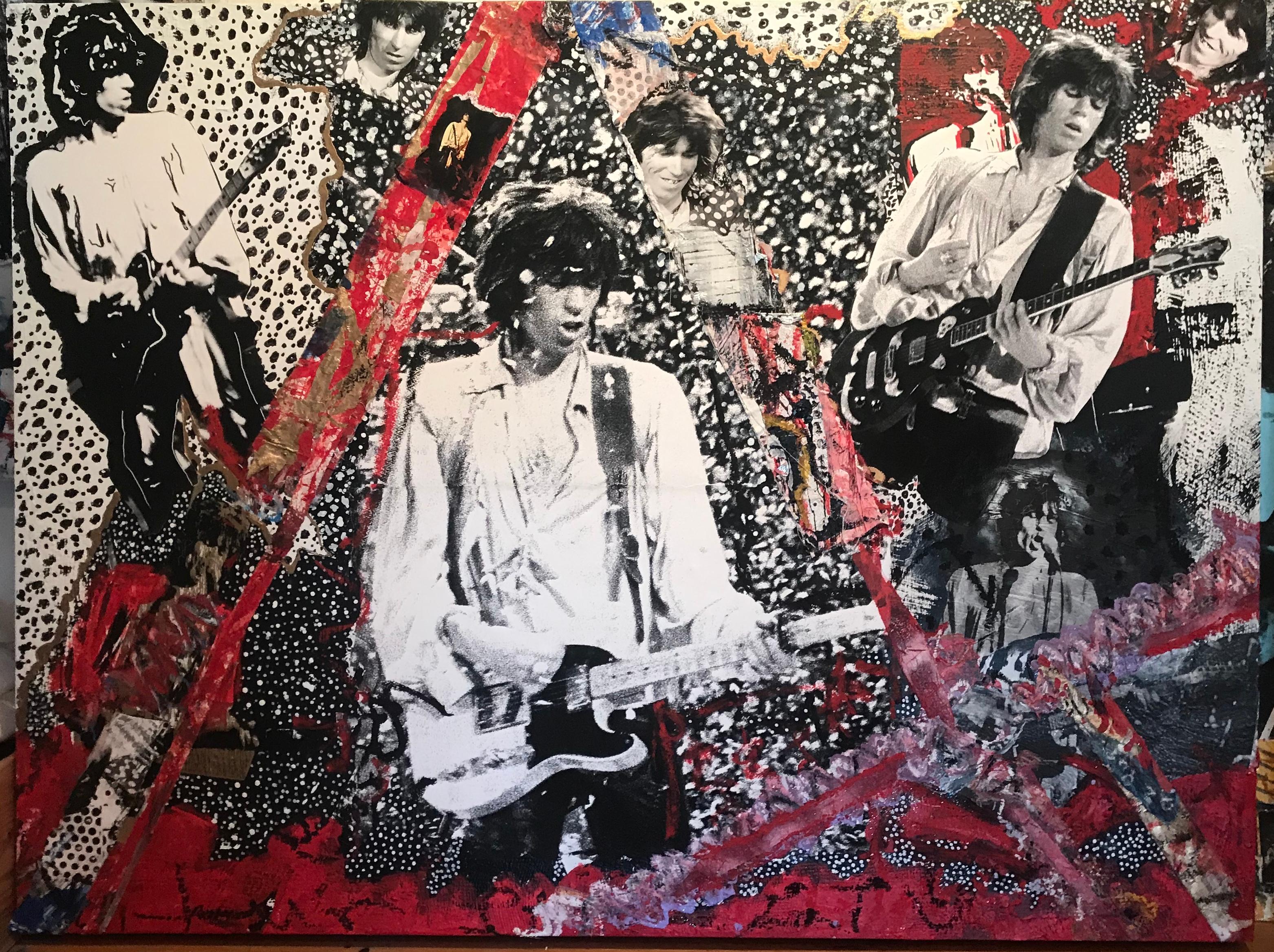Items Similar to Frangipani II - 21st Century Contemporary Oil Painting, By Anne-Rixt Kuik
Want more images or videos?
Request additional images or videos from the seller
1 of 10
Anne-Rixt KuikFrangipani II - 21st Century Contemporary Oil Painting, By Anne-Rixt Kuik2018
2018
About the Item
Anne Rixt Kuik graduated in 2017 at The Classical Academy of Arts in Groningen. She then went for study to Australia and Florence (Italy). Anne Rixt as a little child visited the Rijksmuseum in Amsterdam, together with her father, an artist. She then got fascinated by the works of Frans Hals, the portraits with huge ruffs, the serene colors, the beautiful skins, everything made her wanting to become an artist. Also as little child she liked to look at 'waterpaint' flowing away, making figures in a drop of water. Exactly that is what she does now with several layers of acrylics and several layers of epoxy glue on her works. She gets beautiful effects and wonderful reactions. Her classical education at the Academy of Classical Arts in Groningen peached her to make beautiful portraits and figures. With that and her inspirations she found a beautiful way to express herself with acrylics and epoxy. In our gallery we also have works of Anne-Rixt in oil painting.
- Creator:Anne-Rixt Kuik (1987)
- Creation Year:2018
- Dimensions:Height: 13.78 in (35 cm)Width: 15.75 in (40 cm)
- Medium:
- Movement & Style:
- Period:
- Condition:
- Gallery Location:Nuenen, NL
- Reference Number:1stDibs: LU109913846581
About the Seller
5.0
Vetted Seller
These experienced sellers undergo a comprehensive evaluation by our team of in-house experts.
Established in 1984
1stDibs seller since 2018
97 sales on 1stDibs
Typical response time: 6 hours
- ShippingRetrieving quote...Ships From: Nuenen, Netherlands
- Return PolicyA return for this item may be initiated within 14 days of delivery.
More From This SellerView All
- Still-Life with Red-White Canvas - 21st Century Contemporary Oil PaintingBy Henk HelmantelLocated in Nuenen, Noord BrabantHenk Helmantel probably does not need an introduction to a lot of worldwide art lovers. After all, the artist from Westeremden even has its own museum. ...Category
2010s Contemporary Interior Paintings
MaterialsWood Panel, Oil
- Two nude woman sitting on their sofa- 21st Century Contemporary Oil PaintingBy Cornelis Le MairLocated in Nuenen, Noord BrabantCornelis le Mair (Eindhoven, July 3rd 1944) is a Dutch painter. This Romantic painter is famous because of his 17th century paintings. As a child, Le Mair already developed a talen...Category
2010s Contemporary Nude Paintings
MaterialsWood Panel, Oil
- With Confidence- 21st Century Contemporary Mythology painting of a Running ManBy Nikita MogilevtsevLocated in Nuenen, Noord BrabantThis painting is made by Nikita Mogilevtsev. Nikita Mogilevtsev, born and raised in a very artistic family in St Petersburg has a special style of his own. With his mother and father both as prominent artists, it was almost impossible for him to follow in his footsteps. (When we met him at gallery...Category
2010s Contemporary Figurative Paintings
MaterialsOil, Canvas
- Clavier, Olive Trees - Jos Leurs, 21st Century Contemporary by Dutch ArtistBy Jos LeursLocated in Nuenen, Noord BrabantJos Leurs Clavier, Olive Trees 40 x 50 cm with frame ( included in price) 45 x 55 cm acrylic on canvas Jos Leurs is a Dutch Impressionistic Plein Air Painte...Category
2010s Contemporary Landscape Paintings
MaterialsOil
- Treeroots-21st Century Landscape Oil Painting by Dutch painter Esther SchlebosBy Esther SchlebosLocated in Nuenen, Noord BrabantEsther Schlebos won "The Prix de Norvège" on her graduation in July 2019 for her landscape paintings with which she graduated. Together with Marein Kon...Category
2010s Contemporary Landscape Paintings
MaterialsOil, Wood Panel
- In The Cafe, 21st Century Contemporary Oil Painting, Dutch Artist Flip GaasendamBy Flip GaasendamLocated in Nuenen, Noord BrabantThis painting is made by Flip Gaasendam. An important member of the 'Dutch Northern Figurative Painters' . His paintings are called 'Poems in paint' . The place where he painted this work is at Schiermonnikoog, one of the Islands in the north of the Netherlands. He likes to stay and work on the island and pains he typical sphere of the old Dutch sphere in that famous Hotel. Flip Gaasendam tells with his paintings where he likes, there, in those places, he paints. His recognizable loose touch, carefully chosen colors, spherical landscapes, interiors and portraits have been part of the permanent collection of Galerie Bonnard for years. We read somewhere that Flip Gaasendam has a 'Flip Gaasendam veil' on his subjects. That is, we believe, a good description of the works of this highly esteemed artist. "Poetry in paintings" is also a statement that fits with the work and can be read in the numerous descriptions that can be found about the artist. The artist himself says that he wants to put life to a halt in his work. He says the following about his way of working: 'Because I am an aquarellist from home, I learned how to paint transparently in tone and tone. I also use that in my oil paints. My work is classified as post-impressionistic. When I paint, however, I forget everything about art history. I like a lot of things, from Alma Tadema to Andrew Wyeth, but I am a painter of today. It therefore goes too far to say that I consciously go back to the past. I work unorthodox. I do not apply the paint with a fixed method. I brush with wipes, use the palette knife, work with my hands, etc. That my palette is heavily controlled by the color green, is because I often make a painting blond with cobalt and ocher. My themes are often nostalgic and romantic. as a child, I thought the morning mist was beautiful, and with the light effect in the Groninger station restoration it is just as well. ' The modest artist can rightly be called one of the forerunners of the new impressionism...Category
2010s Contemporary Interior Paintings
MaterialsOil
You May Also Like
- Polish Woman - Impressionist Mid 20th Century Oil Painting by Helena KrajewskaBy Helena Malarewicz-KrajewskaLocated in Watford, HertfordshireHelena Malarewicz-Krajewska (born 14 July 1910 in Biecz , died May 7, 1998 in Warsaw) is a Polish painter, active advocate of socialist realism. Studied between 1928 and 1929 at the...Category
1950s Impressionist Figurative Paintings
MaterialsBoard, Oil
- Laszczyn - Building a Stack 2 - Mid 20th Century Oil Painting by H KrajewskaBy Helena Malarewicz-KrajewskaLocated in Watford, HertfordshireHelena Malarewicz-Krajewska (born 14 July 1910 in Biecz , died May 7, 1998 in Warsaw) is a Polish painter, active advocate of socialist realism. Studied between 1928 and 1929 at the...Category
1940s Impressionist Figurative Paintings
MaterialsOil, Board
- Antonio Segui - Distraido - Oil on CanvasBy Antonio SeguíLocated in Collonge Bellerive, Geneve, CHAntonio Segui 38 x 46 cm Distraido Oil on Canvas Signed and Dated on the back Antonio Segui Biography Born in Córdoba, Argentina in 1934, Antonio Seguí currently lives and works in Paris. He studied at the San Fernando Academy in Madrid, Spain as well as the Ecole des Beaux-Arts in Paris, France. His first solo exhibition was in Argentina at age 23. Antonio Seguí is one of the most internationally renowned Argentinian artists. He began his artistic endeavors at a young age after leaving Argentina to travel the world and study art. His journeys through Latin America, Europe and Africa exposed him to new ideas and encouraged his culturally diverse approach to art. Influenced by artists like Fernand Leger and Diego Rivera, Seguí’s work is generally satirical, critiquing society and human nature. In a pre-computer age, the artist created a vocabulary that is now being explored by a new generation of artists through comics and Manga, yet his visual language and social commentaries remain poignant, both symbolically and literally. Throughout his career, Seguí has developed a fascination for urban life, creating in his work the idea of the “everyman.” The city movement, the fast pace at which life happens and the people who live in these urban spaces are some of the elements that constitute the world depicted in his paintings. It is a prototypical realm inhabited by speedy automatons that take immutable routes leading nowhere. Up close, each figure is an individual, walking down dark alleys, pointing, waving and emerging from potholes. But from a distance, the individuals morph into complex patterns swallowed up in a labyrinth of buildings and cookie-cutter trees. Utilizing cubist techniques, Seguí’s repeated elements give shape to the cities causing planes to vibrate between line and color. Numerous perspectives unfold with each vibration and reflect the many angles of life of the urban man. Always in action, the little figures trample, tip-toe, dodge and advance through Seguí’s imaginary metropolis of life. His work is representated on a series of narratives and criticisms reflected on paintings that show many little men, dressed in 20's style clothes. He uses his own recourse based on comic strip characters, texts, arrows and various signs, juxtaposed onto the figures that resemble comic strip style language. Seguí’s work is collected and exhibited worldwide in places such as the MoMA, New York; Art Museum of the Americas, Washington, D.C.; Frissiras Museum, Athens, Greece; Museo de Arte Moderno de Buenos Aires, Argentina; Museum der Moderne Salzburg, Austria; Museum of Modern Art Dubrovnik, Croatia; and Museo Tamayo, Mexico City, Mexico. The Musée National d´Art Moderne, Paris organized a retrospective of his works on paper in 2005. A monograph on the artist by Daniel Abadie was published in 2010 by Hazan. Antonio Segui Resumé 1995 Art Miami '95, USA. S. Zannettacci, Geneva, Switzerland Marwan Hoss, Paris, France Gallerie du Cirque Divers, Belgium Le Moulin du Roc, France Fundacao C. Gulbenkaian, Portugal Gallerie J. Rubeiz, Beirut, Liban 1994 F. Santos, Portugal E. Franck Gallery, Belgium 1993 Galleria San Carlo, Milan, Italy Galería I. Vega, Puerto Rico Winance-Sabbe, Belgium FIAC, Paris, France 1992 Casa Rosada, Buenos Aires, Argentina Espace Julio Gonzales...Category
2010s Modern Figurative Paintings
MaterialsOil
- LADY WITH MARTINILocated in Los Angeles, CABiography from the niece of the artist from during his lifetime. Paintings acquired from the artist.s estate. Max Turner 1925 - 2019 Max Lamar Turner Painter, Sculptor, Teacher and Author. Max Turner was born in Omaha, Nebraska on July 28, 1925. His father was Lance Howard Turner and his mother Mary Irene Turner. In 1927, his family moved to Bingham Canyon, Utah where Max's father extracted copper from a creek that he had diverted to pass through his garage. The town was located in a narrow canyon on the eastern face of the Oquirrh Mountains. In 1938, when Max was 13, his family moved to Midvale, Utah. After completing high school, Max went to work laying rail until he was inducted into the U.S. Navy to serve during W.W. II. There he took an aptitude test and was initially assigned to the medical corp., later transferring to the dental unit. Max was stationed at Port Hueneme, Ventura County, California through the end of the war. When he was discharged in 1946, he remained in Southern California, living in the Los Angeles area. He met a man named Larry Torres and they formed a partnership to do silk screen work primarily for the Colby Poster Printing Company. This lasted about 10 years until the Colby building caught fire and burned down. In 1958, Max began working for Slade Novelty company that made doll parts using a product called plastisol. A year later, Max began producing plastic parts through his own business. One day, a couple of kids brought in a shrunken skull they had made and asked Max if he could reproduce it. Max said he could and he looked around for a business to work with for this task. He ultimately decided he could create his own machine shop to make molds. As a result, Max purchased a lathe, drill press, grinder and other tools to create his own machine shop and went into business making molds. He built a clientele and in 1973, he moved his machine shop to Glendale, California. Painter, Sculptor, Teacher and Author: Max recalls the day when his interest in art took a new direction. He happened to be in a paint store to purchase some supplies when he saw a card posted on a wall that read, "Come paint with Connie Marlo". Max had been interested in art since his youth and he was frequently impressed with paintings displayed by local artists at various community events. Consequently, he decided to go to Connie's Saturday morning art class at a studio on North La Brea Avenue (between Sunset and Hollywood) in Los Angeles. But, as fate would have it, he immediately took a detour from this class when he found a piece of paper on the floor of the studio referencing another art class dealing with compositions, patterns, rhythms and color harmony. The instructor's name was Hal Reed, a former art student of the Russian/American Master, Nicolai Fechin. Hal owned the building (previously the Will Foster Studio) and had founded the Art League of Los Angeles. When Max found Hal, he asked Hal if he could join his class. Hal said "No, the class was full" but he said Max could monitor the class in the back of the classroom. Max took him up on the offer and began observing the weekly class. During the class, Hal told his students that they should practice what they were learning by going to "live model" classes. Max began attending these classes where he learned how to draw figures. After a few months, Hal and Max became good friends. Hal was so impressed with Max's work that he offered Max the opportunity to teach at another location that Hal was opening in the San Fernando Valley. Max accepted the offer and began teaching his own art class. For Max, it was a quick jump from learning to teaching. Max then found that several of his students had to commute to his art class from the west end of the "Valley". To better serve this group of students, Max decided to relocate to another studio in Calabasas. Max continued teaching, and at this time he was producing very impressive portraits, both oil paintings and charcoal drawings from live models (Max never worked from photos). Max demonstrated real talent, and the style of his drawings and paintings were being compared to those of Nicolai Fechin. And, like Fechin, Max also had an interest in sculpting. One day, Max decided to design and cast a bronze owl sculpture to put in his Calabasas Fine Art Gallery. Later, someone approached Max when he was at the foundry and asked him about his success selling the owl sculpture. The individual who asked this question was convinced that there was a broader market for these sculptures and he ordered a dozen of the owl sculptures from Max. This encouraged Max to do more castings. Some of the new castings were antique sculptures he found and reproduced. As this new business grew, he decided to establish his own foundry, employing up to 15 workers. The business continued for many years, up until the late 1990's when Max got tired of the foundry business and sold it. Max, who was now in his 70's, decided to move on to his next venture as an artist, dedicating himself to doing the actual sculpting of original art. He loved the creativity of sculpting and he had his sculptures cast at local foundries, ironically the same ones that used to be his competition. Max was now fully engaged in his new artistic direction and, over time, he produced a large body of work. He created very impressive sculptures, including about 100 full-size sculptures. He sold some of these to high-end clientele, the Foundry at SLS Las Vegas, and to Hollywood studios. Even though Max now seemed to be totally in his element, he somehow also found time to continue to teach painting classes at the California Art Institute in Westlake Village in Los Angeles. At the institute, he specialized in figure work. Max continued to draw, paint and teach, but he says he stopped sculpting when he turned 90. Max produced four books showcasing his drawings and paintings. The first is "Faces, The Drawings of Max Turner", copyright 2000, that showcases nearly 100 of his portrait drawings. Within the "Acknowledgements" section, he lists Hal Reed and Joseph Nordmann, two former students of Nicolai Fechin. In 2006, Max produced his second book titled "Figures and Faces", reflecting not only portraits but also figure drawings and paintings. It is a wonderful book of Max's work, but it is currently difficult to find. The third book is titled "Faces 2, The Paintings and Drawings of Max Turner", copyright 2009, which includes 75 portrait paintings and drawings. In the "Preface" of this book, Max describes growing up in a small and isolated mining town during the Great Depression. He states that as a kid, he had little exposure of any culture or view of what the rest of the world was like. His neighbor was the trash collector and Max would sometimes go through his truck looking for anything of value. Among other things, he found magazines like Cosmopolitan, Good Housekeeping and Red Book, with covers that frequently showed drawings or paintings of faces. Max states that these images were the very first source of inspiration for him. He says that he began looking more carefully at people's faces and if they had character, he would draw them. By drawing them, Max says that he was making them part of his world, his world of "Faces". In 2018, Max published his newest book showcasing his drawings and paintings. It is titled "Max Turner's Figure Sketches". This softbound book includes 76 pages and over 120 drawings and paintings. In the Introduction, Max explains "I have found that when approaching the figure, one should begin with the gesture. After having captured the essence or feeling of the pose, one can then proceed to build on it." The figure sketches in this wonderful book reflect a Master's work that consistently captures the "gesture"-showing the emotion, movement and expression. Two more books are on the horizon for Max, both dealing with his passion for sculpting. His first, "The Sculpture of Max Turner" is a compilation of his commercial and noncommercial pieces throughout his career. The second, "Terra Cotta Sculpture by Max Turner" is a complete collection of figures done at the California Art Institute. These much anticipated books should be out later in 2018. Max now considers himself primarily a sculptor. But others in the art world are more than impressed with his drawings and paintings as well. His portraits are often described as having a Fechin-esque appearance, referring to the style of Nicolai Fechin. When Max observed those first art classes given by Hal Reed, it should be noted that Hal had previously been a student of the Russian/American Master Nicolai Fechin in the early to mid-1950's. In fact, Hal was a student in the last art class that Fechin taught before he unexpectedly died in 1955. Hal was so strongly influenced by Fechin that he later produced two 30-minute art instruction videos as part his Art Video Productions wherein he specifically described Fechin techniques that he learned in Fechin's class. The Fechin style and techniques were in play when Max later met Hal. Over the years, many of Max's art students, art collectors, gallery owners, as well as the Director of the Monterey Museum of Art have commented on the Fechin-esque qualities of Max's wonderful charcoal drawings and paintings. So, while Max may consider himself primarily a sculptor, his drawings and paintings are also impressive and very much sought after. When Nicolai Fechin died in 1955, three of the nine students in his last art class became life-long friends. Max subsequently became friends with not only Hal Reed, but also with prior Fechin students Joseph Nordmann and Albert Londraville...Category
1990s Modern Figurative Paintings
MaterialsOil, Canvas
- StingBy Steve JoesterLocated in New York, NYMixed Media on Canvas featuring the inimitable Sting. Photographed by Joester. About the Artist: Steve Joester is a British-born Rock & Roll photographer and mixed media artist...Category
2010s Contemporary Portrait Photography
MaterialsMixed Media
- Keith Snow StormBy Steve JoesterLocated in New York, NYMixed Media on wood featuring the infamous Keith Richards. Photographed by Joester. About the Artist: Steve Joester is a British-born Rock & Roll photographer and mixed media a...Category
2010s Contemporary Figurative Paintings
MaterialsMixed Media, Photographic Film, Masonite
Recently Viewed
View AllMore Ways To Browse
Italian Classical Figurative Paintings
Australia Child
Frans Hals
Arrow Stand
Large Male Painting
Modern Figurative Street Scene
Vintage Paintings Of Women
Figural Light Female
Us Money
Large India Paintings
My Atelier
Ballet Dancer Painting
Ballet Dance Painting
Impressionist Cafe
Mother And Child Oil
Used Riva
Oil Painting Of Woman And Flowers
Mens F





